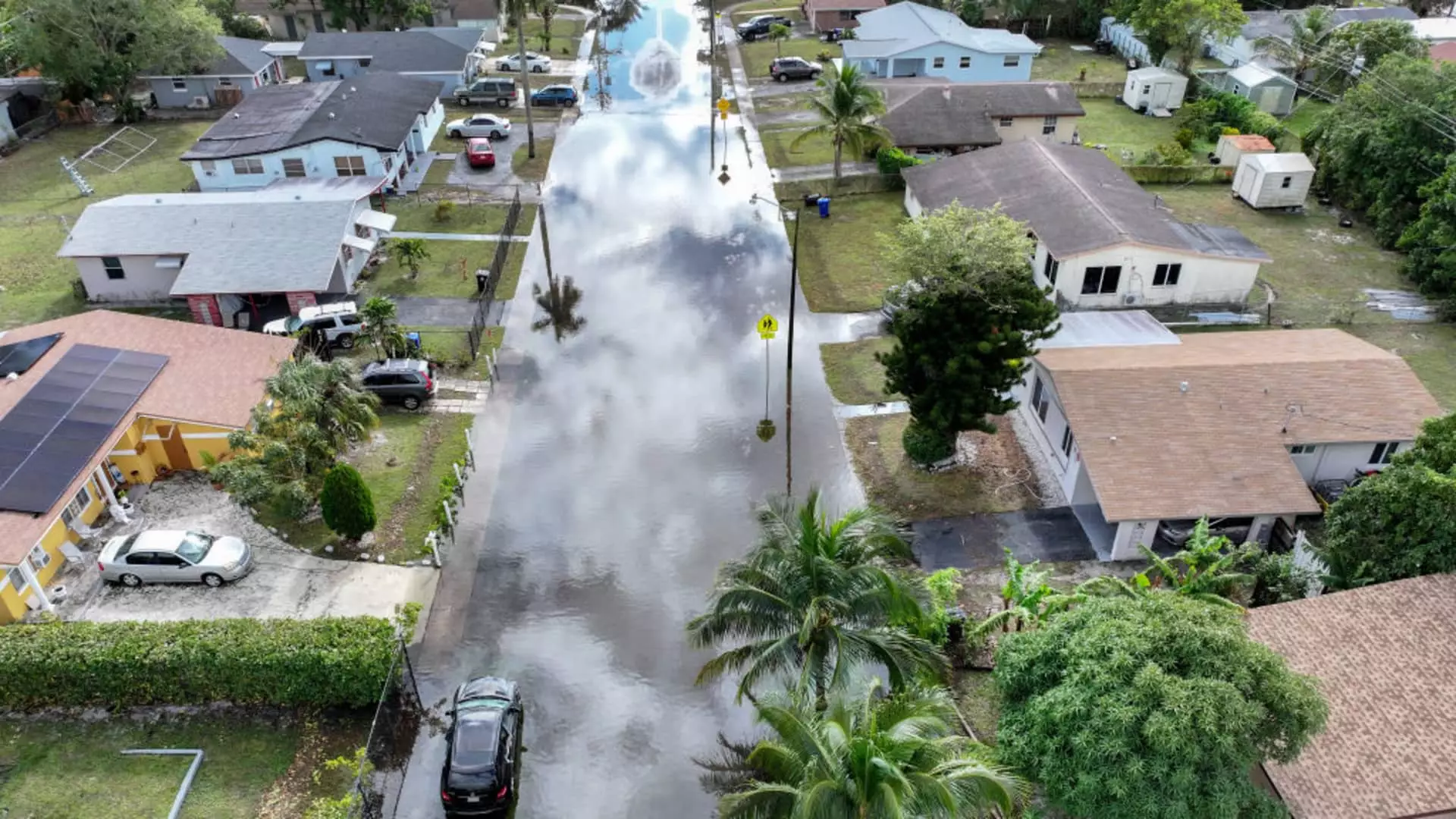As someone navigating the complicated waters of the mortgage market, you might feel overwhelmed by the myriad requirements laid out by lenders. For decades, the maze of credit scores, income verification, and collateral evaluations dictated whether you received that long-coveted home loan. However, today’s financial landscape has shifted dramatically, as the looming threat of climate change forces financial institutions to reconsider their risk assessments fundamentally. The stakes are soaring higher than ever, signaling that anyone looking to secure a mortgage may face not just the traditional financial scrutiny, but also a judgment on the environmental viability of their property.
The integration of climate risk into lending practices illuminates a harsh reality: natural disasters, driven by climate change, have evolved into a substantial economic threat. Lenders are beginning to realize this is not just about whether you can afford a monthly payment—they are grappling with the likelihood that extreme weather might wreak havoc on their investment. A new report by First Street, a firm specializing in climate risk assessment, underscores a troubling fact: increasing incidents of floods, wildfires, and hurricanes are not mere environmental nightmares but formidable indicators of financial loss.
Falling Through the Cracks: The Role of Insurance and Government
The current state of the mortgage market exposes a disconcerting interplay between lenders, insurers, and government agencies—especially under the disruptive influence of political shifts like those seen during the Trump administration. With insurance companies retreating from high-risk areas, the pressure on homeowners mounts. It seems that in the race to address climate risk, these entities have done little to protect consumers, leaving many financially exposed.
For example, a mere ten years down the road, should current destructive weather patterns continue, projected losses for lenders due to climate-related foreclosures could balloon to an alarming $5.36 billion—nearly 30% of foreclosure losses. This isn’t just theoretical; tangible increases in losses and foreclosures are already witnessed in areas like California, Florida, and Louisiana, where Mother Nature’s wrath is especially evident. It feels as though the mortgage landscape is becoming a ticking time bomb, with fragile economic foundations undermined by the rising tide of climate-related disasters.
Adding fuel to this fiery mix, the role of FEMA is in limbo, underfunded and understaffed, further complicating disaster response efforts. Cutting resources dedicated to climate data, as seen with the Trump administration’s changes, poses a real threat to comprehensive risk assessments. With essential data sources drying up, the cycle of ignorance regarding climate risk persists, leaving homeowners and lenders alike in precarious positions.
The Double-Edged Sword of Homeownership
It’s deeply unsettling to consider that the pursuit of the American dream—homeownership—could become a source of stress, anxiety, and financial ruin for tomorrow’s homeowners. As lenders begin to incorporate climate risk into their underwriting processes, your ability to secure financing may no longer hinge solely on your credit score or income. Instead, the geographical location of your potential home can leave you vulnerable, with those in high-risk zones facing skyrocketing premiums and potential denials.
For some consumers, the harsh reality of escalating insurance costs translates into a forced decision: either pay up or walk away from their homes. This phenomenon not only reveals the extent to which climate change has infiltrated our lives but also underlines an unsettling truth—homeowners in at-risk areas are essentially bearing the financial brunt of a crisis they cannot control.
Moreover, the ripple effects on lenders and the broader economy echo a stark warning: the systemic financial risks tied to climate-related challenges extend beyond immediate economic consequences. As savvy consumers might assume, investing in coastal properties has always been alluring, not simply for their aesthetic value but also for the robust returns historically associated with such locations. Yet, the rising tide of climate catastrophes threatens to negate those returns, transforming valuable investments into potential liabilities overnight.
Beyond Profits: A Moral Imperative for Lenders
As the financial world navigates these turbulent waters, there lies a moral imperative for lenders to seriously consider the ethical implications of their decisions. Acknowledging climate risk isn’t just savvy economics—it’s a necessary step toward promoting sustainability and equity. By ignoring environmental factors, lenders are perpetuating a system that prioritizes short-term profits over long-term viability. They must evolve to meet the complexities of our changing world, or risk alienating homeowners and affecting entire communities.
Players in the mortgage market have the unique opportunity to shape a new paradigm, one that aligns financial viability with responsible environmental stewardship. Homeowners deserve the chance to invest in their futures without the shadow of climate-associated ruin looming. The question remains: will the financial sector step up to the plate and adapt, or will they allow climate change to erode both their assets and the values that underpin mortgage lending? The future of our homes, and the very fabric of our communities, hangs delicately in balance.

